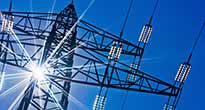On May 23, President Donald Trump signed a series of executive orders designed to significantly enhance the role of nuclear power within the U.S. energy sector. These orders continue the President’s response to the National Energy Emergency he declared upon taking office in January. While there have been various energy-related directives from the White House, particularly those shifting focus to other dispatchable sources of power generation like coal, a group of four executive orders issued on May 23 targets explicitly the nuclear energy sector. These include: 1) calling for an increase in installed nuclear generation capacity, 2) facilitating the construction of new large-scale reactors, 3) revising the methodologies for nuclear reactor testing, and 4) revitalizing the U.S. nuclear fuel cycle. Overall, these orders seek to reduce excessive regulations surrounding the permitting and establishment of new nuclear reactors and provide federal support to the industry.
Nuclear E.O. No.1: “Ordering the Reform of the Nuclear Regulatory Commission”
This executive order directs a significant overhaul of the NRC to accelerate U.S. nuclear energy development. It mandates structural reorganization, streamlined licensing timelines, and a shift away from conservative radiation exposure models. The order sets a national goal of expanding nuclear capacity from 100 GW to 400 GW by 2050. It emphasizes advanced technologies like modular and microreactors, and facilitates expedited approval for designs tested by DOE or DOD. Key reforms include limiting regulatory delays, reducing public hearing burdens, and revising environmental review processes. The E.O. positions nuclear energy as central to U.S. energy security and economic competitiveness.
Key Statements
“..(b) Facilitate increased deployment of new nuclear reactor technologies, such as Generation III+ and IV reactors, modular reactors, and microreactors, including by lowering regulatory and cost barriers to entry;
(c) Facilitate the expansion of American nuclear energy capacity from approximately 100 GW in 2024 to 400 GW by 2050;”
Building on the ADVANCE Act of 2024, this executive order aims to encourage nuclear deployment by cutting licensing fees, adding more staff to the NRC for permitting, and offering financial incentives for new nuclear projects. While largely echoing the Act’s spirit, the order notes that key congressional mandates were not met.
ADVANCE Act of 2024
The Accelerating Deployment of Versatile, Advanced Nuclear for Clean Energy Act of 2024 (ADVANCE Act) is a bipartisan U.S. law signed into effect in July 2024 as part of the Fire Grants and Safety Act. It aims to modernize nuclear energy regulation, incentivize the deployment of advanced nuclear reactors, and strengthen the domestic nuclear fuel supply chain. Within this Act the Congress mandates that “licensing and regulation of the civilian use of radioactive materials and nuclear energy be conducted in a manner that is efficient and does not unnecessarily limit — (1) the civilian use of radioactive materials and deployment of nuclear energy; or (2) the benefits of civilian use of radioactive materials and nuclear energy technology to society.”
Some key provisions of this law include:
- The NRC is directed to expedite licensing processes
- The Act also authorizes price competitions covering NRC licensing fees for first movers in various categories
- It also reduces regulatory costs by limiting specific NRC fees and eliminating some pre-application costs at the Department of Energy
- The legislation strengthens the domestic nuclear fuel cycle by directing the NRC to enhance its capacity to qualify and license accident-tolerant and advanced nuclear fuels. It also prohibits the possession or ownership of enriched uranium produced in Russia or China, aiming to reduce reliance on foreign nuclear materials.
————————————————-
The executive order addresses the thresholds established by the NRC for safe radiation levels and notes that the models supporting these thresholds suggest there is no safe level of radiation, which requires nuclear reactors to maintain radiation levels lower than naturally occurring. The order states that it is now the policy of the United States to incentivize the increased deployment of new nuclear power through advanced nuclear reactors (Gen III+ and IV reactors, modular reactors, and micro reactors), primarily by reducing regulatory and cost barriers to entry.
“(b) Adopt science-based radiation limits. In particular, the NRC shall reconsider reliance on the linear no-threshold (LNT) model for radiation exposure and the “as low as reasonably achievable” standard, which is predicated on LNT. …”
The Linear No-Threshold Model is a radiation risk model that proposes a direct and proportional relationship between radiation exposure and the risk of cancer and other health effects, even at very low doses. A key assumption of this model is that there is no level of radiation below which there is no risk. This specific assumption is the focus of this statement. The E.O. asks the NRC to amend this model or develop a new methodology for risk assessment within a given timeframe.
In conclusion, the E.O. aims to direct the NRC to incentivize the rapid deployment of advanced nuclear energy. As demand grows at an exponential rate due to data centers, along with coal and gas, the administration looks to nuclear as another alternative to address the shortfall in power generation. Historically, building and deploying nuclear power plants has been a lengthy and costly process. However, reductions such as the licensing fee cut and financial awards from the ADVANCE Act, leaner permitting processes, and the preservation of the full tax credit from 45U until 2031 (the One Big Beautiful Bill Act passed in the House of Representatives on May 22) could stimulate increased activity in the nuclear generation industry. The following executive orders also partly aim to promote research to enhance reactor design and efficiency, as well as improve fuel accessibility.
Nuclear E.O. No.2: “Reinvigorating the Nuclear Industrial Base”
This executive order aims to reinvigorate the U.S. nuclear industrial base by rebuilding the domestic fuel cycle, expanding reactor deployment, and strengthening the workforce. It directs the Department of Energy to develop a national policy for nuclear fuel recycling and reprocessing and to restart or repurpose closed nuclear facilities. The order calls for rapid expansion of uranium conversion and enrichment, and use of the Defense Production Act to establish voluntary industry agreements for domestic fuel procurement. It also prioritizes financing for restarting or building nuclear plants and targets 10 new large reactors under construction by 2030. Finally, it mandates investments in nuclear workforce development, apprenticeships, and education to support the long-term growth of the sector.
Key Statements
“The Department of Energy shall prioritize work with the nuclear energy industry to facilitate 5 gigawatts of power uprates to existing nuclear reactors and have 10 new large reactors with complete designs under construction by 2030.”
This directive establishes clear capacity expansion goals and represents a strong federal push to optimize existing assets while accelerating new construction. Power uprates to existing reactors are a cost-effective method for increasing zero-carbon electricity generation, while the goal of starting construction on 10 large reactors by 2030 signifies a renewed commitment to large-scale nuclear deployment. This also reflects the federal government’s intention to reduce project risk through financing mechanisms or regulatory streamlining, likely in collaboration with private industry.
“Within 120 days of the date of this order, the Secretary of Energy… shall develop a plan to expand domestic uranium conversion capacity and expand enrichment capabilities sufficient to meet projected civilian and defense reactor needs for low enriched uranium (LEU), high enriched uranium (HEU) and high assay, low enriched uranium (HALEU)…”
This statement highlights the need to rebuild domestic capabilities in the initial stages of the nuclear fuel cycle. The U.S. dependence on foreign uranium conversion and enrichment, particularly from politically unstable areas, poses risks to energy security. By requiring an increase in enriched uranium production, the administration aims to ensure a stable supply for both commercial reactors and defense uses. This initiative also facilitates the deployment of advanced nuclear technologies, which predominantly require high-assay low-enrichment uranium (HALEU) fuel, currently available only in limited amounts.
The initiative intends to reverse the long-term decline in the U.S. nuclear industry by establishing clear objectives for deploying new reactors, rejuvenating the domestic nuclear fuel cycle, and creating supportive frameworks for workforce development and private sector collaboration. Its impact is significant: enhanced federal support and streamlined regulations could hasten the commercialization of advanced reactor technologies and lessen reliance on foreign fuel supplies.
Nuclear E.O. No.3: “Reforming Nuclear Reactor Testing at the Department of Energy”
This order transforms the Department of Energy’s strategy for nuclear reactor testing, aiming to speed up the advancement of cutting-edge nuclear technologies. It instructs the DOE to prioritize and accelerate the testing of advanced reactors, such as microreactors and small modular reactors, at national laboratories and through a new pilot initiative separate from these labs. The objective is to have at least three new reactors operational by July 4, 2026. Furthermore, the order reaffirms DOE’s authority over non-commercial test reactors and requires expedited approvals with coordinated internal review teams. It also directs the DOE to optimize its environmental review process under NEPA to avoid delays. In summary, the Executive Order seeks to rejuvenate U.S. nuclear innovation and reclaim global leadership in reactor technology.
Nuclear E.O. No.4: “Deploying Advanced Nuclear Reactor Technologies for National Security”
This executive order mandates the swift implementation of advanced nuclear reactor technologies to enhance national security and energy resilience at military and DOE facilities. It requires that a nuclear reactor be operational at a domestic military base by 2028 and specifies DOE locations for powering artificial intelligence and other critical defense infrastructure. The order mobilizes federal resources for uranium and plutonium, creating a fuel bank for sanctioned projects. It simplifies regulatory and environmental reviews and promotes the establishment of nuclear fuel processing facilities. A robust export strategy is incorporated, focusing on new and revised 123 Agreements and increasing support for American nuclear firms internationally.
One Big Beautiful Bill Act on Nuclear:
On May 22, the House of Representatives approved the One Big Beautiful Bill Act (OBBBA), which limits the scope of various credits, especially for non-nuclear entities involved in the tech-neutral electricity incentive. The OBBBA retains the 45U production tax credit for existing nuclear facilities through 2031 and includes a specific carve-out for new advanced nuclear projects to qualify for the tech-neutral 45Y/48E tax credits, as long as construction starts before 2029, with subsequent credit phase-out based on in-service years. The Senate is planning to develop its version of the legislation, with subsequent passage expected later this year.







